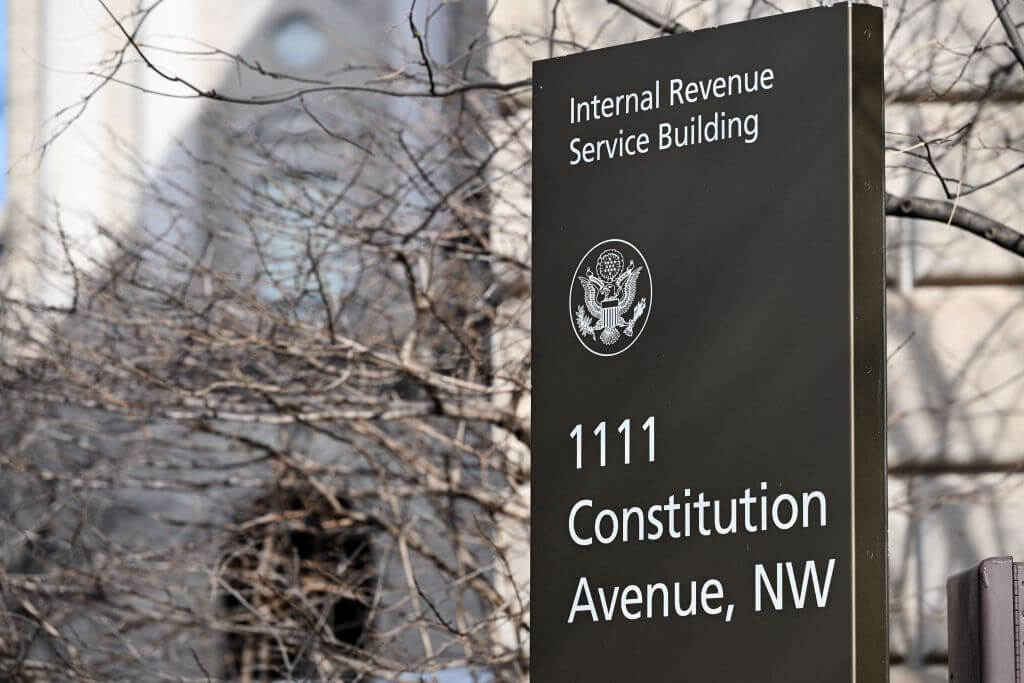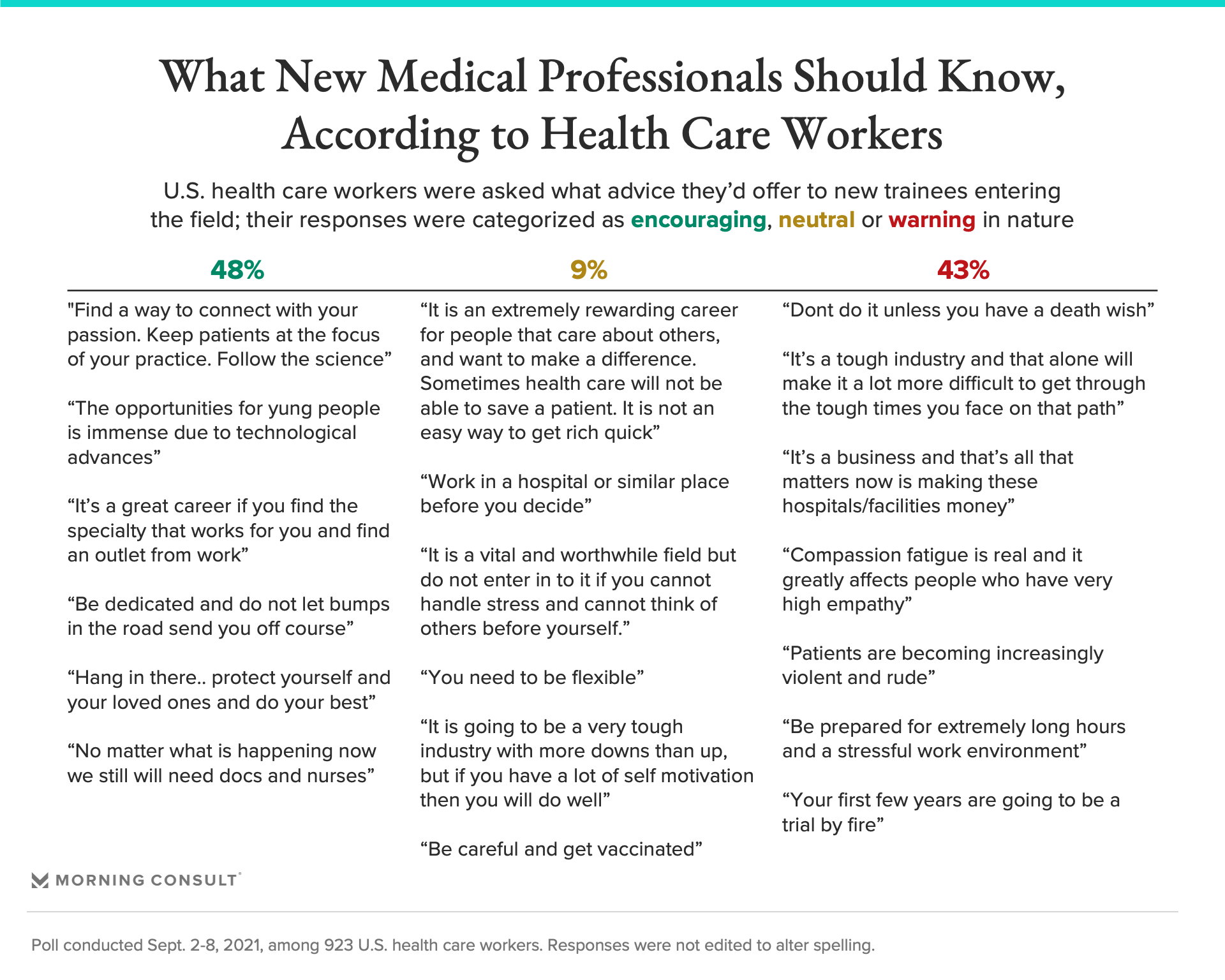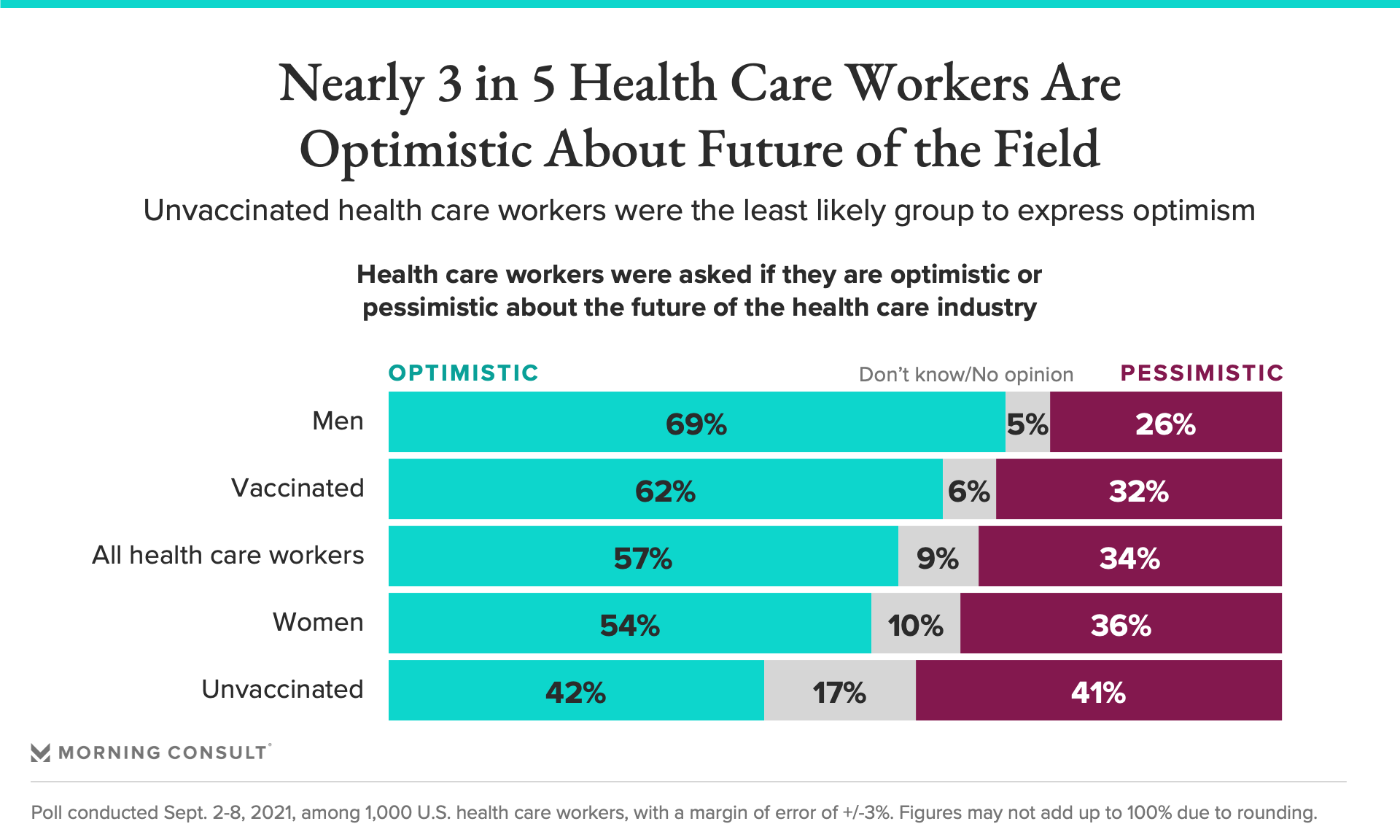Health Care Workers’ Message to Future Colleagues: Don’t Join Us Unless ‘You Are Completely Committed to It’
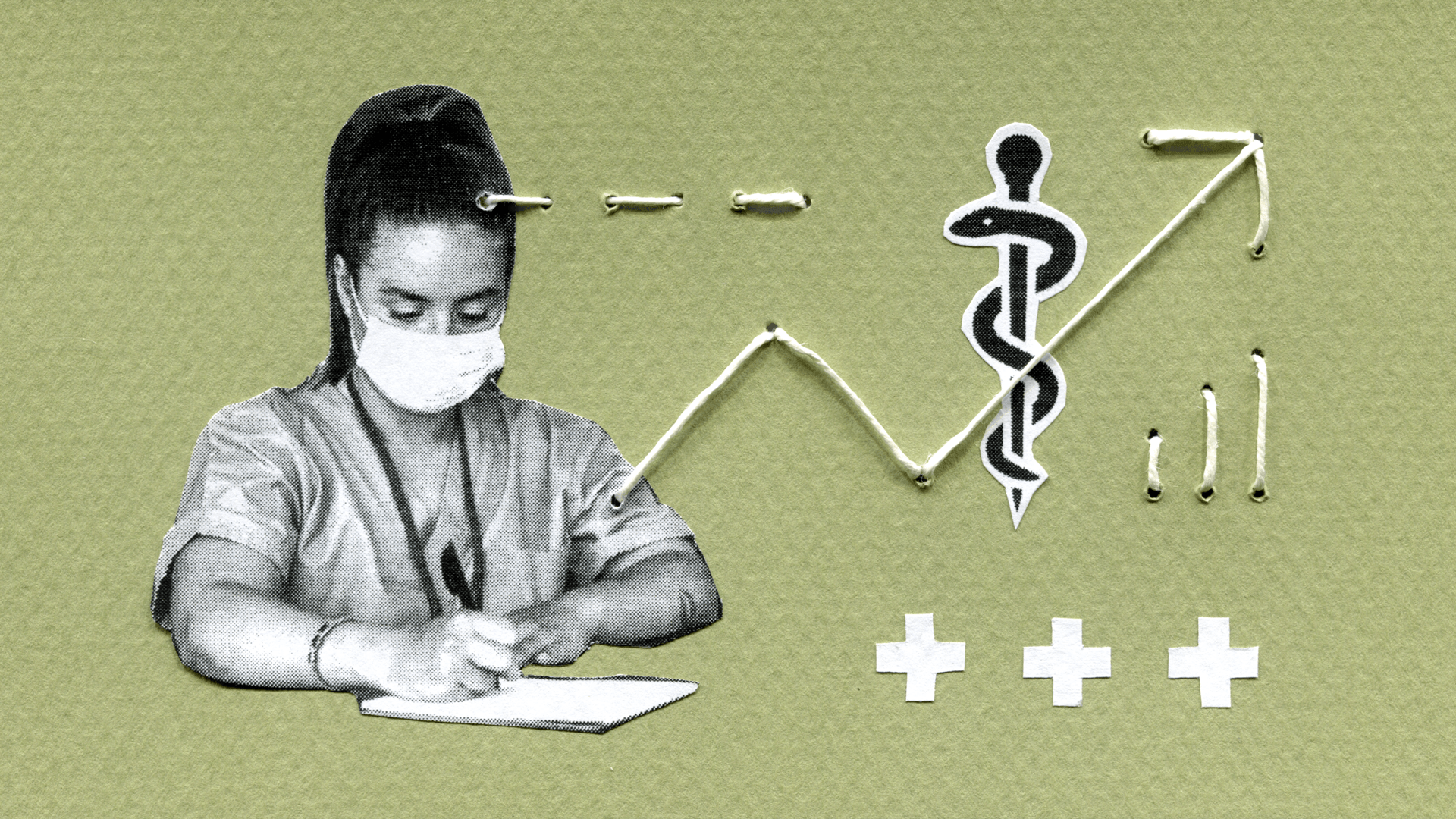
VOICES FROM THE FRONT LINES OF HEALTH CARE: PART II
A new special report from Morning Consult explores how health care workers have fared during the pandemic and how they view the future of the medical field. The data is drawn from a poll of 1,000 health care workers and is a follow-up to a January survey and series.
Other stories in the report: Nearly 1 in 5 Health Care Workers Have Quit Their Jobs During the Pandemic | ‘A Sinking Ship’: Pandemic’s Mental Health Toll Continues to Roil Health Care Workers | Pandemic, Worker Shortage Pose Major Challenges to Long-Term Care Industry
Key Takeaways
Open-ended survey comments run the gamut, from insights about “immense” opportunities to warnings of “violent and rude” patients.
About 7 in 10 men are optimistic about the future of health care compared with just over half of women.
Vaccinated health care workers are 20 percentage points more likely than their unvaccinated counterparts to express optimism about the industry’s future.
For many doctors, nurses and other health care workers, the past 19 months have been the most grueling of their careers.
Yet despite the ongoing challenges as the pandemic rages on, there are signs of hope for the future of the field. Medical and public health schools have noted an uptick in applications since the pandemic began. And new Morning Consult polling found that nearly 3 in 5 health care workers are optimistic about where the industry is headed.
The poll, conducted Sept. 2-8, comes as the pandemic forces training programs and students alike to reconsider what the pipeline into the U.S. health care workforce does — and should — look like.
“If we don't take some of the learning that the pandemic has offered us, then we will be doing a disservice to future generations of learners in the health profession,” said Kate McOwen, senior director of educational affairs at the Association of American Medical Colleges.
That includes more regional collaboration between programs for nurses, doctors and physician assistants, she said. Medical students, meanwhile, noted that the application process for residency programs, which typically requires them to pay for their own travel to visit, were able to do interviews virtually instead. Clinical rotations at other programs were also limited during the pandemic.
Health care workers have their own ideas about what new entrants to the field need to know. In the survey, Morning Consult asked more than 900 health care professionals to share the advice they’d offer to new trainees, and many had a common message: “Working in healthcare is hard and it’s something that should only be done if you are completely committed to it.”
That’s not to say all respondents felt the same way. One medical professional said people shouldn’t enter the field “unless you have a death wish”; on the other end of the spectrum, another worker said that “seeing the results you are capable of makes you feel whole.”
The poll also identified significant gaps: Men were more likely than women to be optimistic about the future of the health care industry, while vaccinated workers were more positive than their unvaccinated peers.
McOwen said the gender divide isn’t surprising given extra child care responsibilities have largely fallen on women during the pandemic and because the power brokers in health care are still largely white and male, despite medical schools being roughly evenly split between men and women.
“I think mentoring the next generation, and then changing our hiring practices to put women and people of color in leadership positions, it has to happen in order to address these kinds of disparities that are still present in our field,” McOwen said.
COVID-19 has been a wake-up call for students, too. For Hannah Hendrix, a medical student who plans to go into emergency medicine, the realities of the work came into focus last spring, as hospitals instituted hiring freezes and some residents she knew struggled to find jobs in the emergency room, even with COVID-19 patients overwhelming hospitals.
“There was a sense that there wasn't a very deep bench, but somehow all these folks still couldn't find jobs,” said Hendrix, who’s on leave from The Ohio State University College of Medicine for a year while she leads the American Medical Student Association. “That's certainly a concern that a lot of people have had, that three or four years from now, we all get through our residencies and then there's nothing waiting on the other side.”
Now, Hendrix said she’d like to see federal funding for residency programs expanded to help address the looming national physician shortage, and for programs to make sure the supply and demand for certain specialities are better aligned. Her group is also pushing medical schools to emphasize the so-called social determinants of health, after seeing how COVID-19 disproportionately affected low-income and nonwhite communities.
The federal government is also investing in these issues. Tucked in congressional Democrats’ multitrillion-dollar social spending package is funding to shore up the number of nursing and medical faculty and students, as well as scholarships and loan repayment for clinicians practicing in underserved areas.
This spring, Congress set aside $400 million over five years to bolster the public health workforce through an AmeriCorps public service program, which aims to recruit 1,000 new workers in the first year, said Karen Dahl, the program’s senior adviser for COVID-19.
“The need is greater and more urgent than ever” to bring more people into public health, she said, and the program intends to offer early-career “pathways into those high-quality jobs.”
Hendrix and other future clinicians said they’ll be taking the lessons from the COVID-19 pandemic with them as they pursue their careers.
“It was a difficult time to be on the fringes of medicine, where you're not essential, but it feels like you should be doing something,” Hendrix said.
Gaby Galvin previously worked at Morning Consult as a reporter covering health.
Related content

As Yoon Visits White House, Public Opinion Headwinds Are Swirling at Home
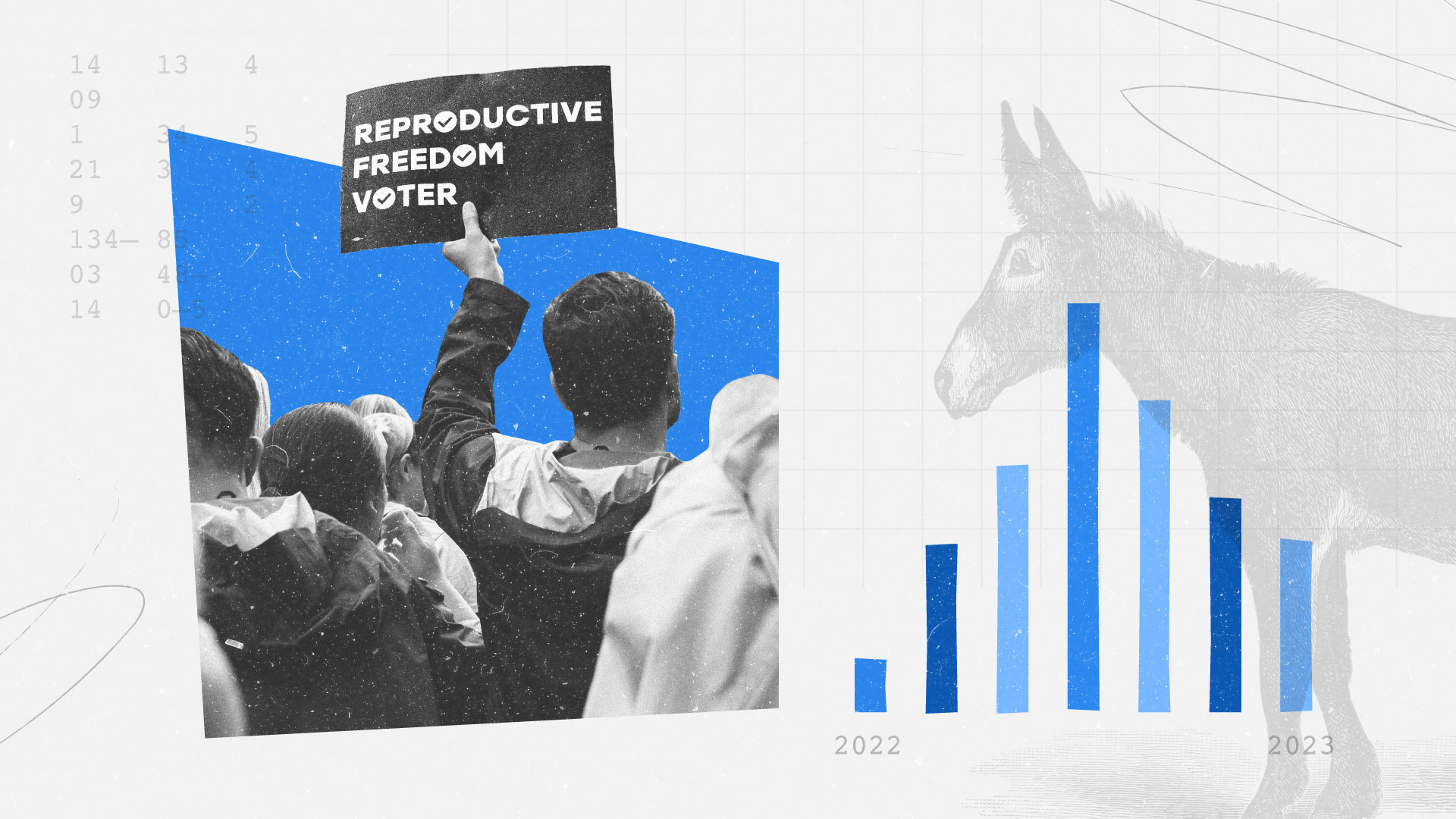
The Salience of Abortion Rights, Which Helped Democrats Mightily in 2022, Has Started to Fade
